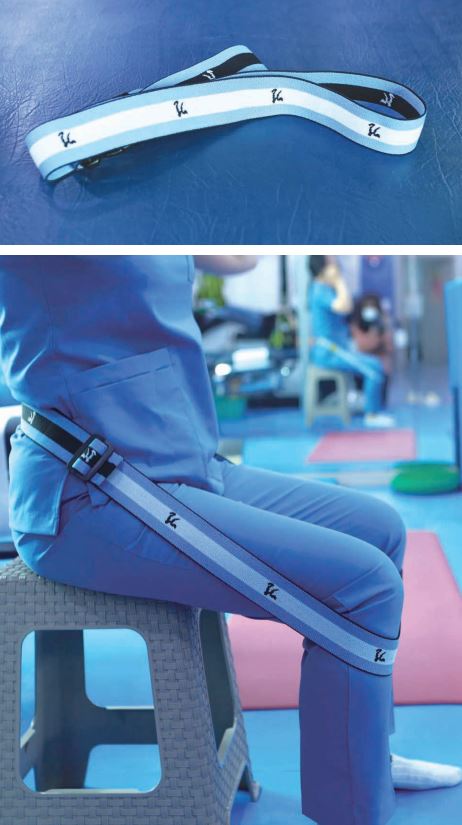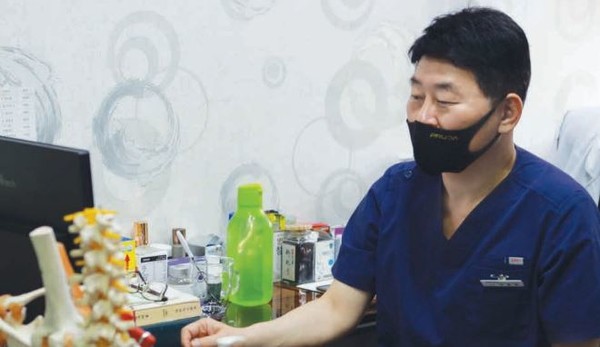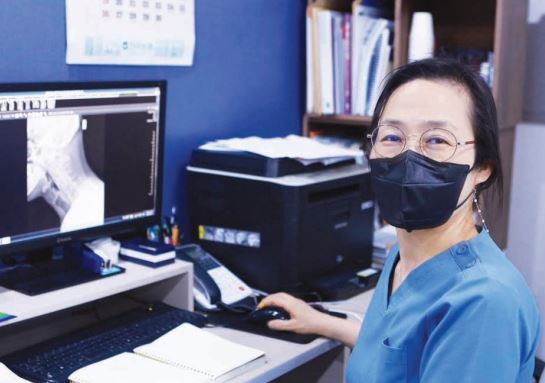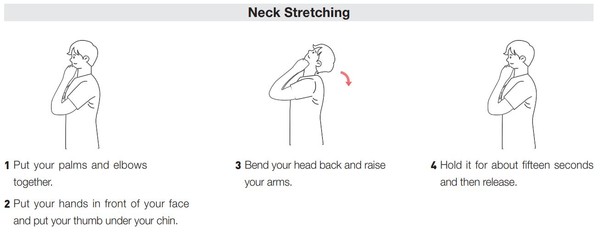Have you ever been unable to sleep because of back pain? Have you ever dropped something because your hands were numb? It may be an emergency! You may have to go to the hospital right away. But don’t panic. The JBNU Globe will tell you how to deal with it.

Anonymous A, who had been complaining of back pain for a long time, recently underwent disc surgery due to lumbar disc herniation, also called disc herniation. It was around the second year of high school that she, who is only twenty-two, began to feel back pain. A, who believed that it was stress from the college entrance exam and pain from past injuries, postponed going to the hospital.
However, since the end of this January, her legs suddenly became numb and stiff. When she went to the hospital, she found out that she was suffering from a disc herniation that was so severe that she had to have an operation. When the doctor told her to undergo surgery as soon as possible, A decided to do it in February. “It was devastating. I thought it was pain that would just blow over. However, when I was told to have surgery, I was shocked and cried.”
What was A’s usual posture like? It wasn’t different from what we would normally see. She didn’t overdo exercise in the wrong posture. She often crossed her legs and read books or looked at her cell phone in a prone position. However, what made her different from others was that the onset of pain came early in life, and she ignored her body’s warning signs.
Is this true only for Anonymous A? We bet that once you read this, you were surprised and uncrossed your legs. According to Health Insurance Review & Assessment Service, lumbar disc herniation, the leading spinal disease, is increasing every year. Of these, sixty percent are known to be working adults in their twenties and fifties. What is noteworthy is the increase in the proportion of patients in their twenties and thirties complaining of back pain. Disc herniation is no longer just for elderly people.

The main cause of disc herniation in the younger generation is prolonged improper posture. These days, the use of electronic devices such as smartphones and tablets have become more commonly used. When looking at these screens in the wrong position, the neck becomes stiff due to the head being lowered, which causes pain. This pain does not stop at the neck but gradually extends to the shoulders, back, and waist.
Since disc herniation can be treated without surgery if detected in the early stages, it is imperative to get treatment early on. Keep an eye out, and if the pain persists, if you feel discomfort when walking, or if you have any sensory problems, we recommend that you get treatment right away. If you miss the right timing, your bones may begin to twist.
- Preventive Measures & Correct

There are a few points to maintaining the correct posture in your daily life. When you sit for a long time, you must try to sit upright. To do this the legs must be slightly open, the lumbar spine must be slightly tilted, and it is important to always keep the neck straight. You can use assistive devices such as an auxiliary band and Curble (a chair modeled after the c curve of the spine) to get the right posture. Sitting with an auxiliary band slightly above the lower knee and L2 (2nd Lumbar Vertebra) may help to achieve the most stable position. However, assistive devices do not always help you to keep the right posture. The lumbar spine and neck of our body should have a ‘C’ shape. Curble can help with this, but if you rely on it for too long, your muscles will weaken and you will not be able to maintain a proper posture. Additionally, if you use an auxiliary band, it is best to take a break every twenty minutes, otherwise, your body will become very tense. Using assistive devices can only help you to form the right posture, not cure your bad posture. Therefore, rather than relying on these devices, it is more important to try to maintain the right posture on your own.
- Experts' Advice
To get professional information on this, The JBNU Globe visited a Pilates instructor, an orthopedic surgeon, and a rehabilitation therapist.
Hong Dong-hee, a Pilates instructor, said many people come to pilates to develop their physical strength and rehabilitate their bodies. “Young people especially come for rehabilitation. The main reason is due to their incorrect posture in everyday life,” she explained. According to Hong, people come to Pilates to relieve their pain after being diagnosed with spinal diseases such as spinal disorder, spinal stenosis, and scoliosis.
|
According to data from Health Insurance Review & Assessment Service in 2019, spinal disease patients were 19% higher than in 2015. Therefore, how can Pilates relieve pain? The answer lies in the ‘core muscle’. Core muscles hold together our body by supporting the spine, pelvis, and abdomen. If our core is not strengthened, we use the spine excessively, which puts undue stress on the spine and causes spinal disease and pain. We can strengthen our core muscles through repeated exercise in Pilates, preventing future pain. “It creates the right skeletal position and reduces the risk of injury,” she added. |

An orthopedist, Dr. Lee Yong-ok, said the number of young patients visiting the hospital with neck and back-related diseases has increased. He said people who sit in the same position for a long time, such as craning their neck when studying, will experience pain from this harmful posture.

Next, The JBNU Globe asked rehabilitation therapist, An Eun-kyeung, about having correct posture. “If the correct posture is not maintained, then a straight neck, scoliosis, and pelvic spine imbalance may occur,” she added. According to An, when growth stops as an adult, a regression can occur in the curve of the spine. She said the spine must be at the right angle to support shock absorption and weight distribution. When scoliosis occurs, it is because the weight has shifted to one side. If the weight remains on that side, the spine regresses, and lumbar disc herniation can occur. When this occurs, the disc between the vertebrae is pressed and touches the nerves, resulting in symptoms of numbness in the arms or legs, including headaches. She added that when one develops a straight neck, it feels like a rock on the back of the neck.
Lastly, The JBNU Globe inquired as to what kind of posture we should have. An replied, that when we sit down, being cross-legged on the floor and crossing our legs on the chair is not good because it causes the pelvis to twist. How can we check if our pelvis is twisted ourselves? It’s simple. Just look in the mirror and if the length of your legs is different, a twisted pelvis could be the culprit. If that is the case, it is important to strengthen the core muscles and keep the pelvis straight. She recommended using a bed and pillow that can support the spine when we lie down.
- Stretches That Help Your Posture
The longer you sit, the tighter your iliopsoas becomes, so that stretch can relieve potential back pain.



Recently, more and more people are breaking down their bodies due to poor posture. Once the spine is twisted, it is hard to turn it back, and it causes a lot of pain. Remember, a broken body cannot be put back together! Old habits die hard. Why don't you try to develop better posture habits from now on?
| Park Ji-woo, Lee Da-yeon Reporters, Yoon Ye-rim Cub-Reporter

